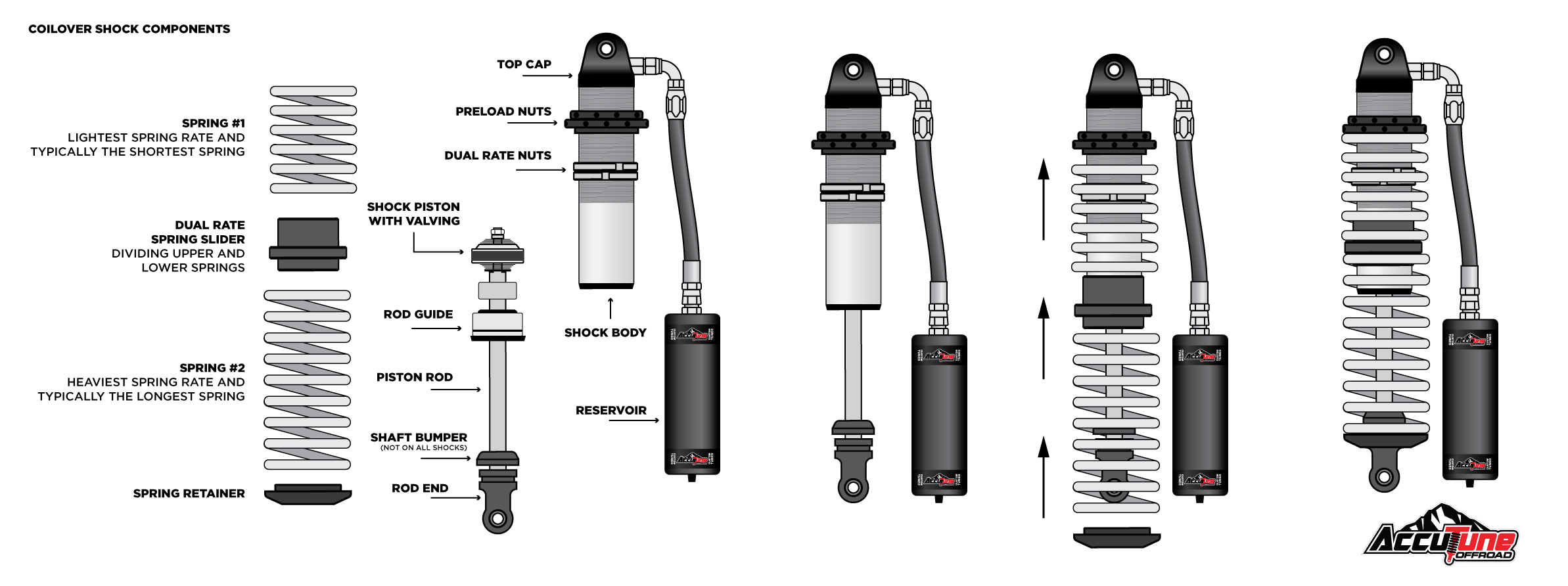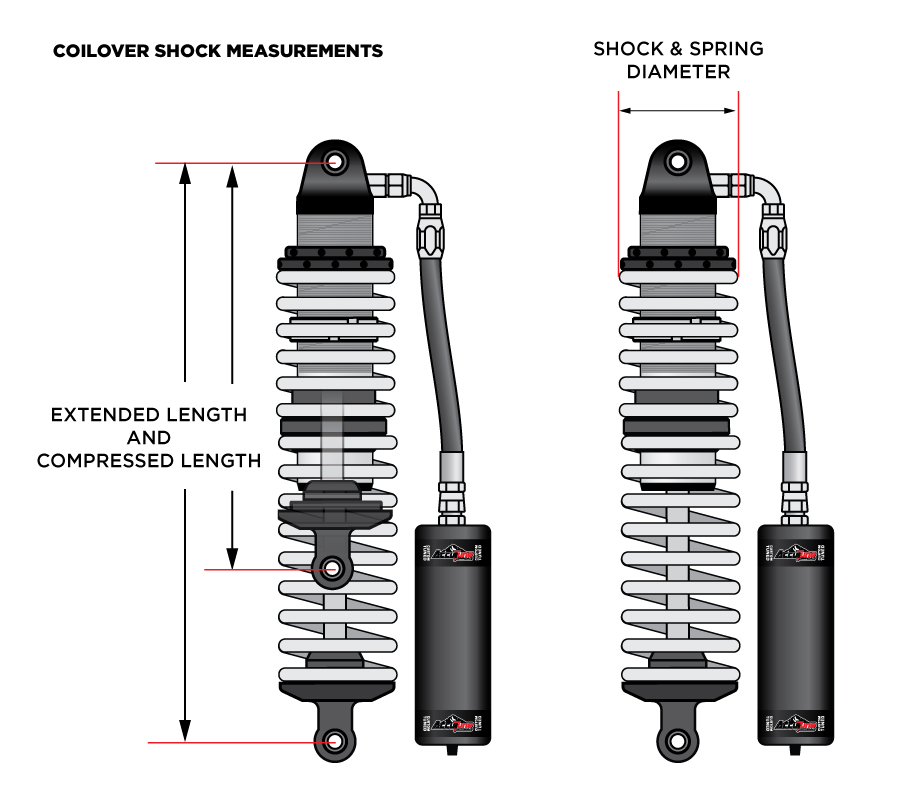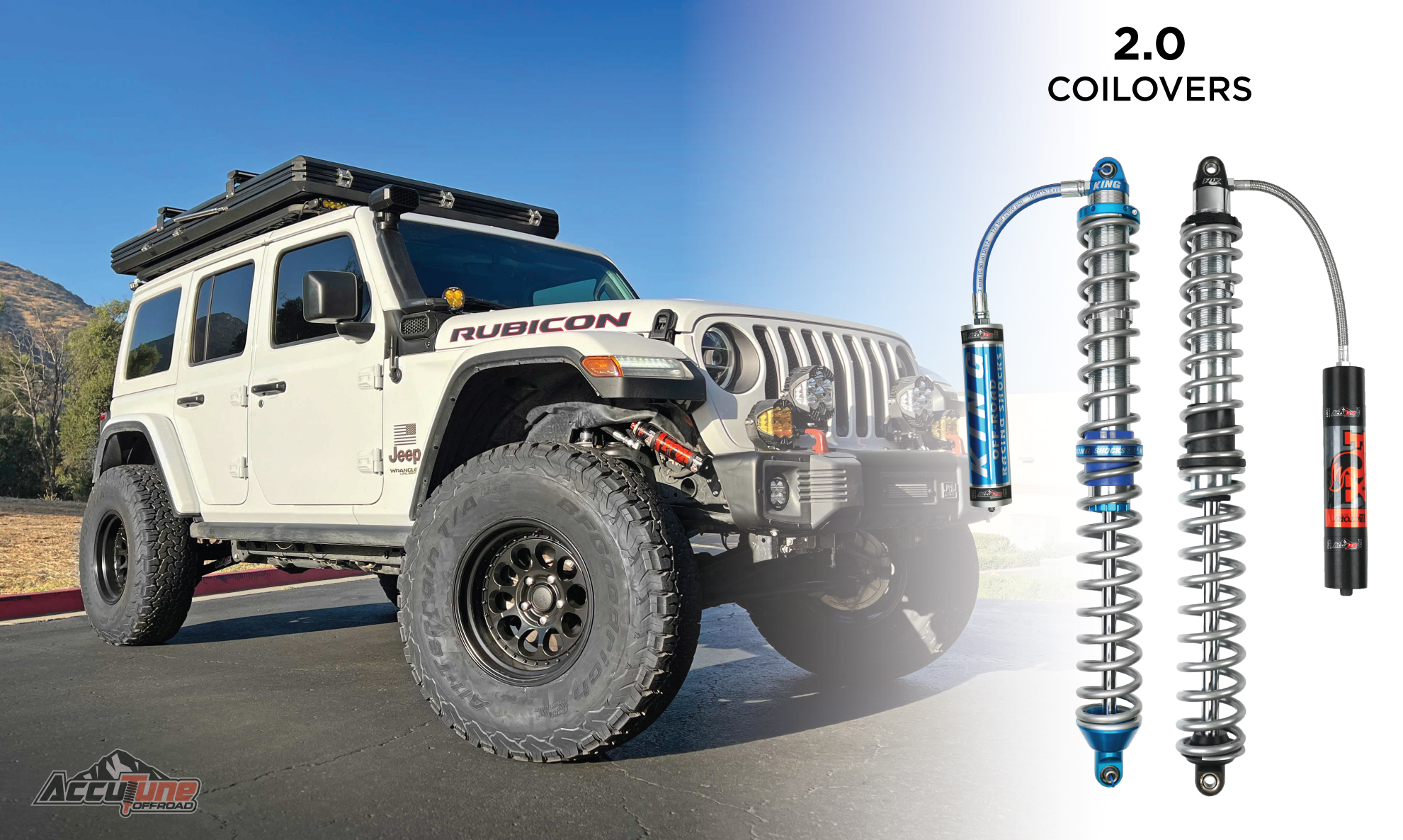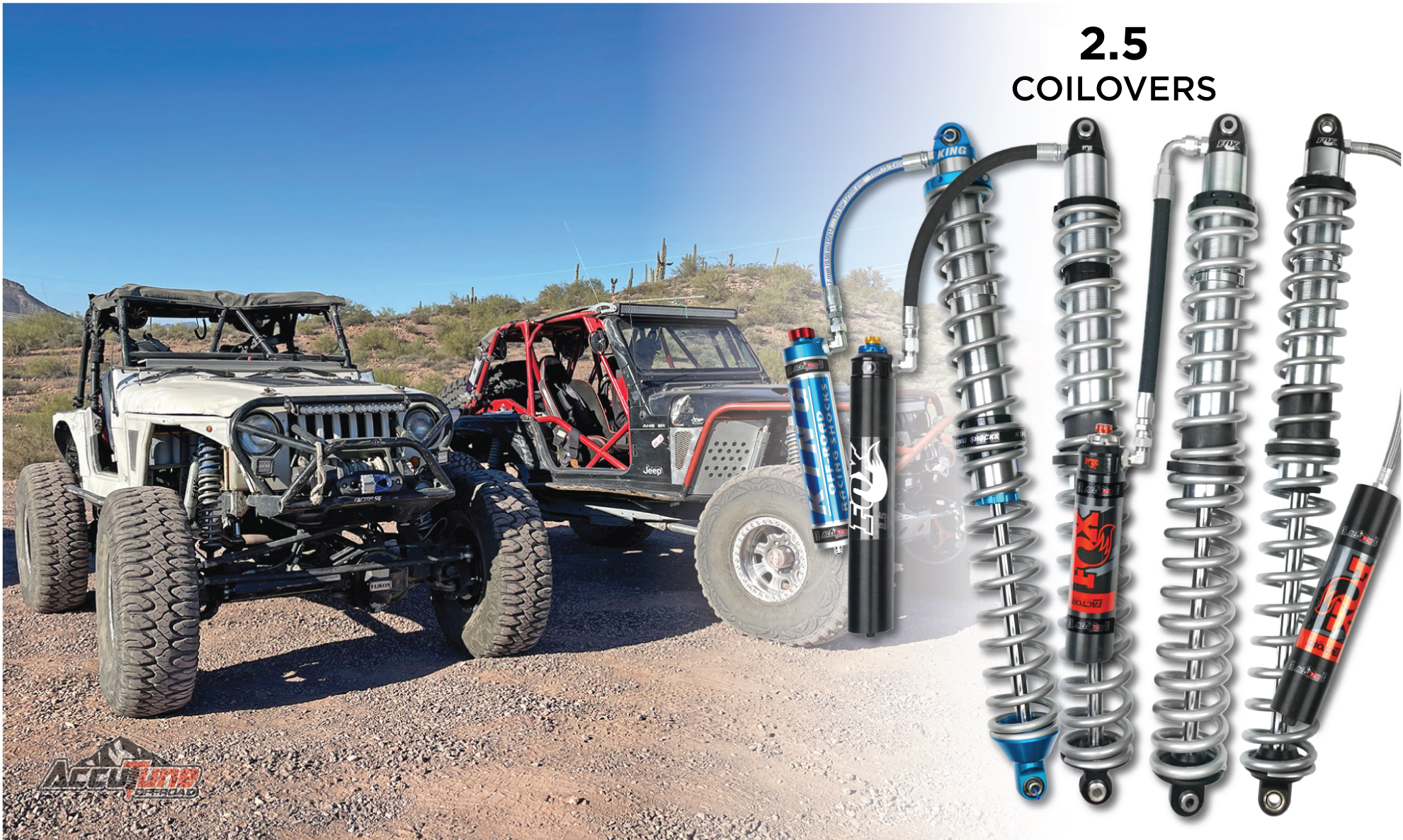March 28, 2023
Thinking about building a trail rig with coilover shocks but not sure which size is right for you? Most setups come down to three common options—2.0″, 2.5″, or 3.0″ diameter coilovers. While shock length is another key factor, this article will focus specifically on shock diameter and how it affects performance.
Here’s what we’ll cover:
-
Why coilovers are a smart choice
-
Coilover fitment for your vehicle
-
Shock oil capacity and why it matters
-
Ride quality and performance differences
-
Real-world examples of vehicle and shock combos
Things to Consider Before Choosing Coilovers
Before deciding on coilover size, ask yourself a few key questions:
-
Vehicle Use: Will it be primarily street-driven, a mix of street and trail, or built for pre-running and racing?
-
Fitment: Can your vehicle accommodate larger shocks in both diameter and length?
-
Brand Preference: Do you lean toward Fox or King, or are you open to other brands?
-
Suspension Setup: Are your shocks mounted to the axle, control arms, or trailing arms?
-
Bypass Compatibility: Will you be running a bypass shock in addition to your coilover?
-
Performance Goals: Are you looking for mild upgrades or maximum performance gains?
-
Tuning Needs: Do you want a comfort-focused tune for daily driving or a performance tune for aggressive off-road use?
Why Coilovers?
Coilover shocks are the go-to choice for off-road vehicles seeking maximum suspension performance. They deliver excellent ride quality whether your rig is a daily driver, weekend trail machine, or full-on race build. The biggest advantage of a coilover is tunability—you can fine-tune nearly every aspect of suspension performance. From spring rates to valving, coilovers give you control that standard spring-and-shock setups simply can’t match. While they may be a more expensive upgrade, the performance benefits often outweigh the cost.
Key Advantages of Coilovers:
-
Pistons: Choose from high- and low-flow piston options (Fox only).
-
Valving/Tuning: Highly responsive to custom tuning for ride comfort or performance.
-
Spring Rates: Wide range of spring options to match vehicle weight and performance needs.
-
Dual-Rate Nuts: Fine-tune the transition point between primary and secondary springs for better control.
-
Preload/Ride Height: Precisely dial in ride height at each corner.
-
Travel: Offer significantly more suspension travel than most separate spring-and-shock setups.
-
Packaging: More compact and easier to mount compared to running separate springs and shocks.
Coilover Fitment
Fitting coilover shocks onto a vehicle can be challenging, which is why accurate measurements are critical. Getting it wrong could mean clearance issues or poor performance out on the trail. Not all 14” travel shocks share the same dimensions, so it’s essential to compare options and find the right match for your specific build. [Click here to see a detailed guide on measuring for coilover shocks.]
 Remote Reservoirs & Oil Capacity
Remote Reservoirs & Oil Capacity
We typically don’t recommend emulsion coilovers (without reservoirs), mainly because they lack the performance and tuning flexibility of a remote reservoir shock. [Learn more about that here.] Remote reservoirs increase a shock’s oil capacity, which helps manage heat during hard use. By keeping temperatures down, the shock oil and seals last longer, and you avoid shock fade—a loss of damping performance caused by overheated oil. For vehicles that see frequent off-road use or higher-speed driving, a larger diameter remote reservoir shock is usually the smarter choice.
That said, bigger isn’t always better. While larger shocks carry more oil and resist fade better in racing environments, they can also introduce ride-quality challenges. As shocks cycle, oil flows through piston ports and flexes the valving. Too much oil volume per stroke can make the ride excessively stiff. You can compensate with softer valving (thinner shims), but that increases the risk of shim breakage. The key is choosing a shock within its optimal tunable range for your vehicle’s weight and suspension setup. Too small, and the shocks will feel underdamped; too large, and the ride becomes overly harsh.
Ride Quality & Performance
Every shock has an optimal stiffness range where it performs best. Ride quality isn’t just determined by spring rates—piston design and internal valving play a huge role in how the suspension feels on- and off-road. Brands like Fox and King use different piston designs, which require specific tuning approaches to achieve the best performance.
When recommending a coilover for your build, we consider these factors carefully, and sometimes this may lead us to suggest a different piston configuration to match your vehicle and intended use. With our tuning expertise, we can optimize any 2.0, 2.5, or 3.0 coilover shock for both comfort and performance.
Note: King Shocks generally offer only one piston design per shock size.
2.0 Coilover Shocks
Examples of Use: Lightweight rock crawlers or buggies, daily driver Jeeps/trucks/SUVs, or slow-speed off-road vehicles.
2.0 coilovers are ideal for vehicles that see light to moderate off-road use. “Slow-speed driving” generally refers to technical rock crawling, not sustained high-speed desert runs. These shocks are compact, affordable, and offer a wide range of spring rates, making them easy to package in most builds.
For this type of vehicle, a stock bump stop or universal foam-style bump stop is usually sufficient. If you’re debating between 2.0 and 2.5 coilovers and plan to do higher-speed off-road driving, adding DSC adjusters can provide additional tuning flexibility and improved performance.
2.5 Coilover Shocks
Examples of Use: 1-ton Jeeps or trail rigs that do a mix of rock crawling and high-speed desert runs.
For more custom off-road builds tackling challenging trails and varied terrain, 2.5 coilovers are an excellent choice. If you enjoy high-speed desert driving, the larger shock offers additional oil capacity and improved damping, helping prevent shock fade and maintaining consistent performance.
2.5 coilovers are popular for rigs that need to handle both slow rock crawling and faster desert runs. Adding compression adjusters is recommended to fine-tune the ride for different conditions and maximize performance across a range of off-road situations.
3.0 Coilover Shocks
Examples of Use: High-speed desert pre-running, desert racing, or extreme off-road vehicles.
3.0 coilovers are large-diameter shocks designed to accept 3.75” ID coil springs, which can make packaging a challenge. These shocks are generally only necessary for vehicles dedicated to extreme off-road use or racing.
They provide massive oil volume and damping capacity, allowing the suspension to handle big impacts at high speeds. For most non-racing builds, 3.0 coilovers are overkill and can lead to a harsh ride.
Common applications include:
-
Trailing arms on desert race trucks paired with a bypass shock
-
Internal bypass shocks for King of the Hammers 4800 class vehicles














